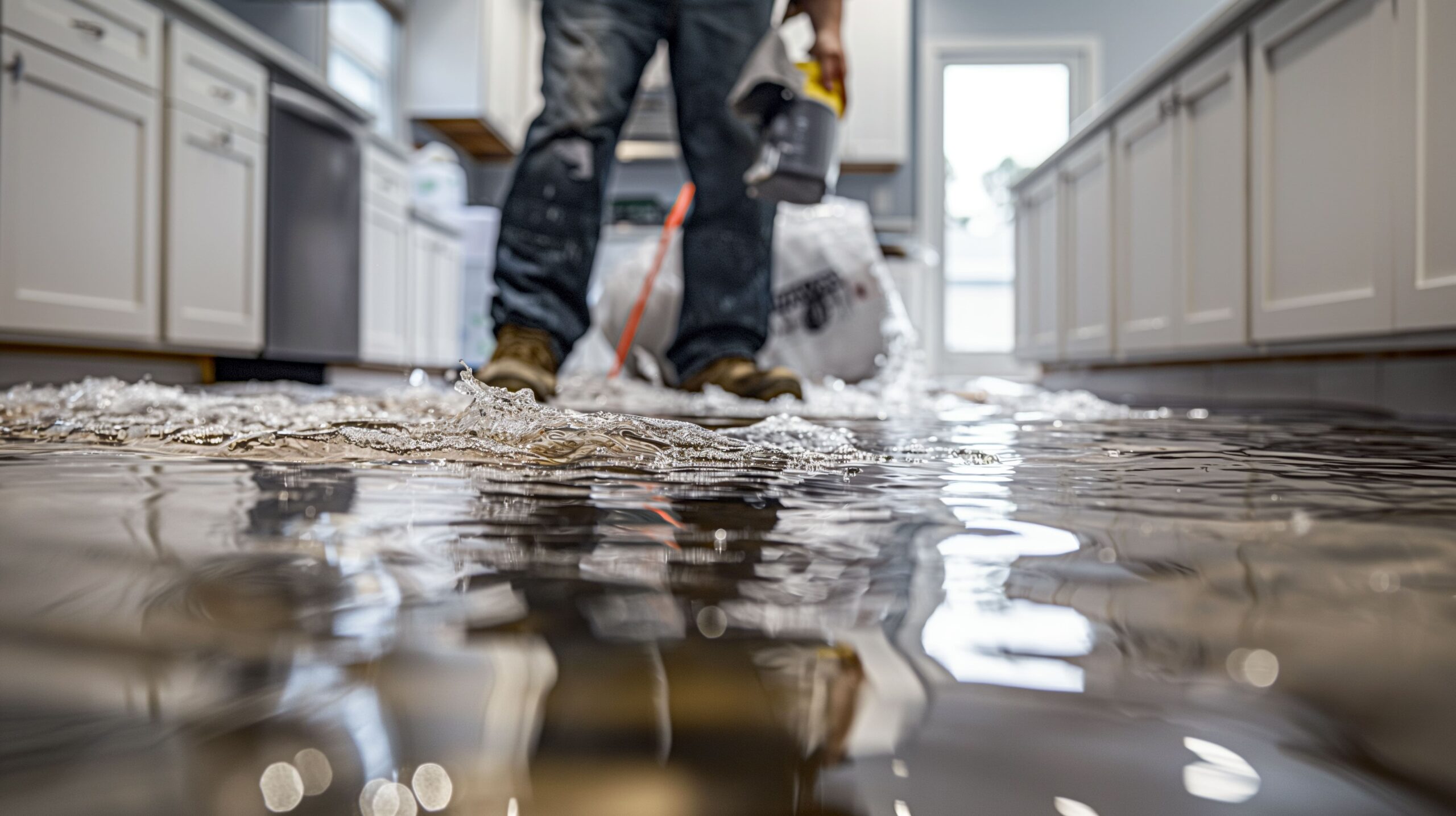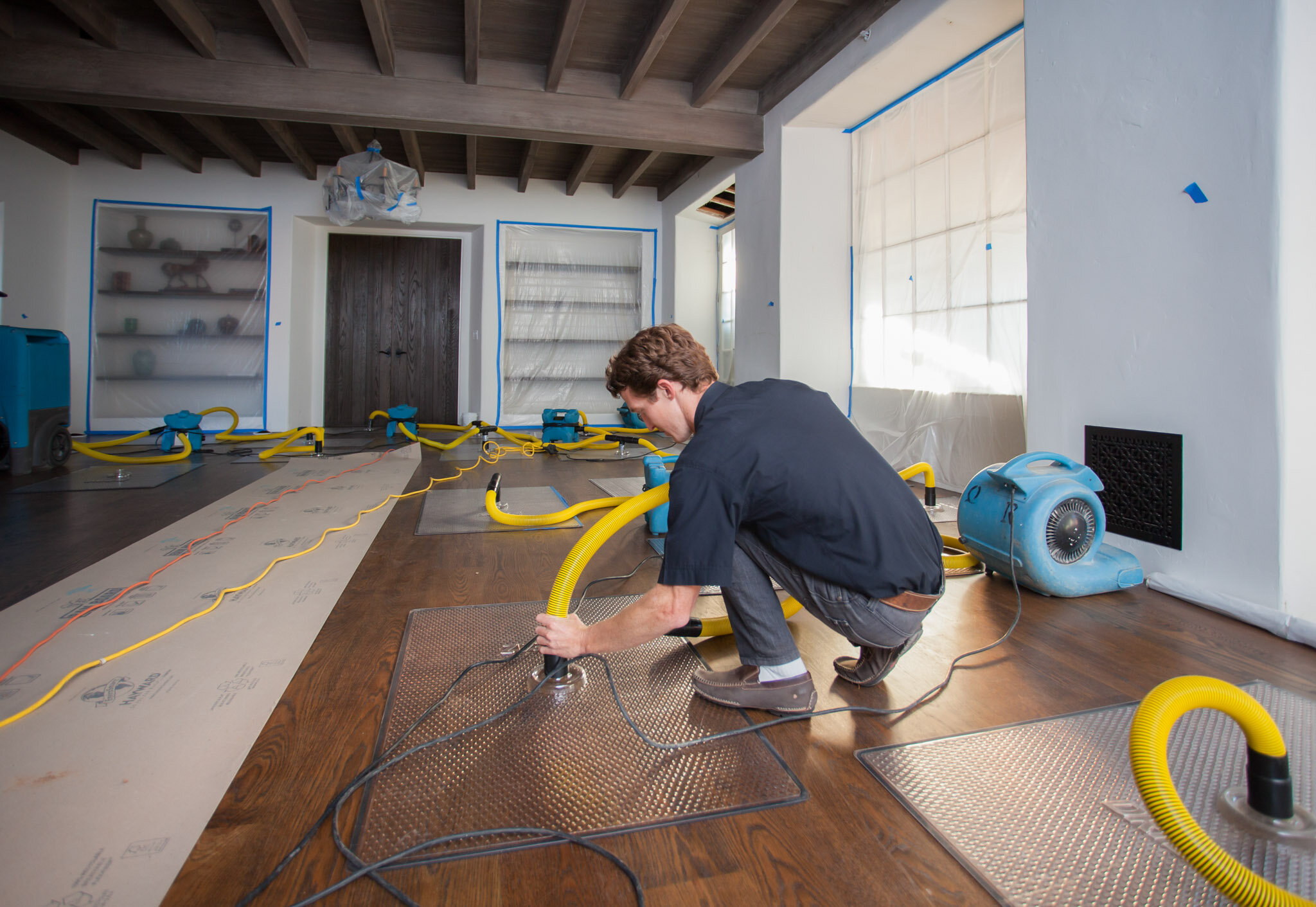Water Damage Restoration 101: Recognizing the Process and Price
Water damage can strike unexpectedly, leaving house owners in a state of complication. Comprehending the restoration procedure is vital for efficient recovery. From examining the damage to picking the best solution provider, each action affects the total result and price. Elements such as the sort of water damage and seriousness additionally play a considerable duty. What are the particular strategies used in repair, and exactly how can one prepare for potential expenditures?
Kinds Of Water Damage

Preliminary Analysis and Examination

Water Removal Methods
Following the initial analysis, effective water removal techniques are utilized to alleviate damage and prevent further problems. These techniques include making use of specific devices such as submersible pumps and industrial-grade vacuums - Water Damage Restoration. The choice of approach depends upon the volume of water present and the type of materials impacted. For standing water, completely submersible pumps are usually used for rapid elimination, while vacuum cleaners are optimal for extracting water from carpets and upholstery. Additionally, progressed methods like water extraction floor coverings may be employed for hard-to-reach areas - Water Damage Restoration. The objective is to remove as much water as feasible, lessening the capacity for mold development and structural damage. Trigger and reliable water removal is crucial in the total water damage remediation procedure
Drying Out and Dehumidification Process
Once the water removal is complete, the drying out and dehumidification process becomes critical to restoring the affected location. This phase generally utilizes industrial-grade dehumidifiers and air movers to successfully lower moisture levels. The dehumidifiers attract moist air, eliminating excess moisture, while air movers flow air to increase evaporation. Tracking tools is commonly used to track moisture and temperature degrees, ensuring perfect drying out conditions. The duration of this procedure can differ depending on the degree of the water damage and environmental variables. It is necessary to thoroughly completely dry all influenced materials, including walls, flooring, and furnishings, to avoid mold growth and structural damage. Appropriate execution of this action is essential for an effective reconstruction end result.
Cleansing and Sanitizing Afflicted Locations
A detailed first analysis and assessment of affected locations is important to recognize contamination degrees once the drying process is full. Water Damage Restoration. Effective cleansing methods and appropriate products should after that be utilized to get rid of particles and stains. Sanitization and disinfection techniques are essential to assure that dangerous virus are gotten rid of, restoring the space to a safe problem.
Initial Analysis and Examination
Before starting any remediation efforts, a complete first analysis and examination of the affected locations are essential for effective cleaning and sanitizing. This procedure involves recognizing the degree of water damage, figuring out the resource of the water invasion, and evaluating the products impacted. Assessors generally try to find signs of mold and mildew growth, architectural integrity issues, go to these guys and damaged personal belongings. The evaluation additionally consists of checking moisture levels using customized devices to guarantee no covert water pockets continue to be, as these can lead to further problems. Documenting the searchings for is necessary for preparing the next action in the remediation process. A thorough first assessment makes it possible for repair professionals to devise a targeted method for efficient cleaning and disinfecting, ultimately reducing damage and wellness risks.
Cleansing Methods and Products
Reliable cleansing and disinfecting of water-damaged areas require a range of methods and products tailored to the particular products impacted. For permeable surface areas like drywall and carpeting, removal methods are vital to eliminate excess wetness, adhered to by deep cleansing with specialized cleaning agents. Non-porous materials such as tile or steel can be cleaned making use of commercial-grade cleansers that effectively remove pollutants. Vapor cleaning is another reliable method, specifically for carpetings and furniture, as it uses heats to eliminate bacteria and mold and mildew (Water Damage Restoration). In addition, environmentally friendly items are progressively popular for their security and efficacy - Mold Remediation After Water Damage. Inevitably, choosing the proper cleansing approaches and items not just assures prompt tidiness however likewise help in stopping further damage and carcinogen connected with water intrusion
Sanitization and Disinfection Techniques
When dealing with water damage, proper sanitization and sanitation approaches are important to ensure the safety and health and wellness of the damaged environment. After initial cleaning, surfaces should be treated with proper anti-bacterials to eliminate microorganisms, mold and mildew, and microorganisms that thrive in moist conditions. Typical techniques consist of using EPA-approved chemical disinfectants, which can be used via splashing or wiping methods. In addition, ultraviolet (UV) light systems can successfully sanitize locations by counteracting microorganisms without extreme chemicals. The option of approach frequently depends upon the kind of materials impacted and the extent of contamination. Ultimately, extensive sanitization not just recovers a safe living space however additionally assists avoid future wellness dangers associated with sticking around dampness and mold and mildew growth.
Repairs and Restoration Options
Examining the damage brought on by water direct exposure is essential for figuring out the suitable repairs and reconstruction alternatives. Home owners might encounter various concerns, consisting of harmed drywall, warped floor covering, and jeopardized architectural aspects. Depending on the degree of the damage, repair work might entail replacing sections of drywall, installing brand-new floor covering, or reinforcing structural beam of lights. In cases of extreme damage, total replacement of afflicted products could be required. In addition, expert conservators frequently recommend making use of dampness meters to evaluate surprise dampness degrees prior to picking the very best strategy. It is essential to act immediately to stop mold and mildew growth and more damage. Selecting the best choices not only recovers the home yet likewise ensures long-lasting safety and security and functionality.
Elements Influencing Restoration Costs

The degree of water damage straight impacts the restoration costs home owners can expect to incur. Variables such as the resource of the water, the period of exposure, and the afflicted materials substantially affect pricing. Clean water damage from a busted pipeline is generally less expensive to bring back contrasted to damage created by sewage. Furthermore, the level of contamination dictates the need for specialized cleaning and disposal services, additionally boosting expenditures. Geographical area also plays a role, as local labor prices and availability of repair services can vary. Lastly, the urgency of the action influences prices; quicker interventions usually result in decrease overall expenses by avoiding additional damage. Understanding these variables is essential for property owners when approximating repair expenses.
The 3 main types of water damage are classified based on contamination degrees: clean water, gray water, and black water. A complete preliminary assessment and inspection are essential actions in the water damage repair process. For standing water, submersible pumps are generally used for rapid elimination, while vacuum cleaners are optimal for drawing out water from carpetings and furniture. The degree of water damage directly impacts the remediation sets you back house owners can expect to sustain. Clean water damage from a busted pipeline is usually less pricey to bring back compared to damage created by sewer.